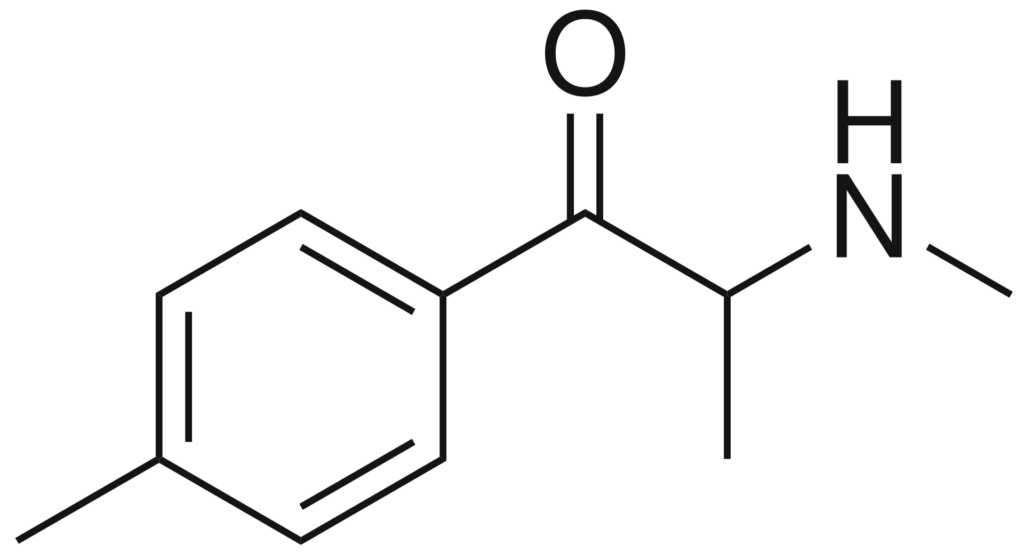Synthetic Stimulants (Bath Salts)
Classification: Stimulant, entactogen, hallucinogen
Background: This group consists of several different designer drugs; however, they are frequently referred to collectively because they are often indiscriminately prepared together within one dose and because of their similar effects on the body. Designer drugs are so named because they were developed to subvert law enforcement and drug testing agencies and are advertised as legal highs. This group of drugs was designed to produce effects similar to amphetamines, ecstasy and cocaine. They are characterized as central nervous system (CNS) stimulants and dopamine reuptake inhibitors; therefore they are considered stimulant drugs with psychedelic and psychoactive properties.
The most common of these synthetics are MDPV, cathinone, methcathinone and mephedrone. MDPV (methylenedioxypyrovalerone) was first seen around the year 2004 as a research chemical with reportedly four times the potency of Ritalin. It has been popularized as a club drug, often used in combination with alcohol, GHB, cannabis and other abused drugs. Most recently it has been established as the primary ingredient of bath salts, such as Ivory Wave, and is associated with extreme side effects of psychological disturbances such as causing users to mutilate themselves and others while submerged in paranoid hallucinations.
Cathinone is extracted from the shrub plant Catha edulis (khat) and is chemically similar to ephedrine and the amphetamines. Methcathinone, originally prescribed in the Soviet Union in the 1930s as an antidepressant and diet drug, is a recreational drug considered addictive in nature and is similar to cathinone.
Methcathinone is created by bathtub chemists by oxidizing the common drug ephedrine, an easily obtainable legal stimulant. Mephedrone belongs to this same group of synthetic cathinone derivatives. It was first synthesized in 1929 but was rediscovered in 2003 and is reportedly manufactured in China. There are currently no known prescribed uses for the synthetic stimulants.
Street Names: Bath salts, Ivory Wave, MCAT, Lightning, Meph, Bliss, WIN-35, 428, Ivory Coast, Purple Wave, The New Meow Meow, Vanilla Sky, Cat, Bathtub Speed, Stroof, Jeff, Khat, MDPK, Lunar Wave, Sunshine, Recharge, Sextacy, Magic, Super Coke, Ocean, Charge Plus, White Lightning, Cloud 9, PV, Scarface, Hurricane Charlie, Aura, Red Dove, White Dove, Blue Silk, Serenity Now
Mode(s) of Use: Smoked (salt or freebasing), oral capsules and tablets, insufflation of powder, rectal, IV
Physiological effects: Overstimulation of the cardiovascular system with risk of heart and circulatory problems, overstimulation of the nervous system with risk of agitation and fits, nose bleeds and burns, dangerously raised body temperature, rashes, dilated pupils, altered blood pressure, breathing difficulties, bruxism, loss of appetite, discoloration of the extremities (cold and/or blue fingers), rapid heartbeat, profuse sweating, loss of bowel control, muscle damage, renal failure, myocardial infarction, headaches, nausea, seizures.
Psychological effects: Euphoria, talkativeness, alertness, elevated mood, mild sexual stimulation, increased motivation, severe agitation/aggression, depression, severe paranoia, hallucinations (auditory and visual), delusions, anxiety, tinnitus, prolonged panic attacks, potential for developing personality disorders.
Toxicity: Interbatch variability due to differing synthetics and dosing allow for a high potential for overdose. Synthetics are active at extremely low doses: ~5 mg compared to 100 mg for other, more common stimulants. Users can inadvertently take larger doses, allowing risk for overdose. Use of these drugs is often followed by very painful hangovers for more than three days, causing emotional fragility, diminished cognitive ability, muscle pains, sore jaw, loss of appetite, hallucinations, paranoid delusions, acute agitation and crushing suicidal blackness. Toxicity of these drugs is typically treated with a CNS depressant, such as the benzodiazepine lorazepam, to counteract the stimulant affects.
Metabolism: Current data and literature is limited on the metabolism of the multiple synthetics available. Because of the batch-to-batch variability, dosing irregularities and the variable synthetics used, predicting a half-life and detection window is complex. Furthermore, the required effective dose for synthetic stimulants is much lower than their cocaine / ecstasy / amphetamine counterparts, resulting in lower excreted metabolite levels accompanied by higher psychoactive potency.
Questions? Contact us!




The information provided is for educational purposes only and is not intended to be used as medical or legal advice. Detection times are approximate and may be influenced by a number of factors, including BMI, duration of drug use, dosage and interindividual metabolic differences. For specific drug testing result interpretation questions, please contact us.
